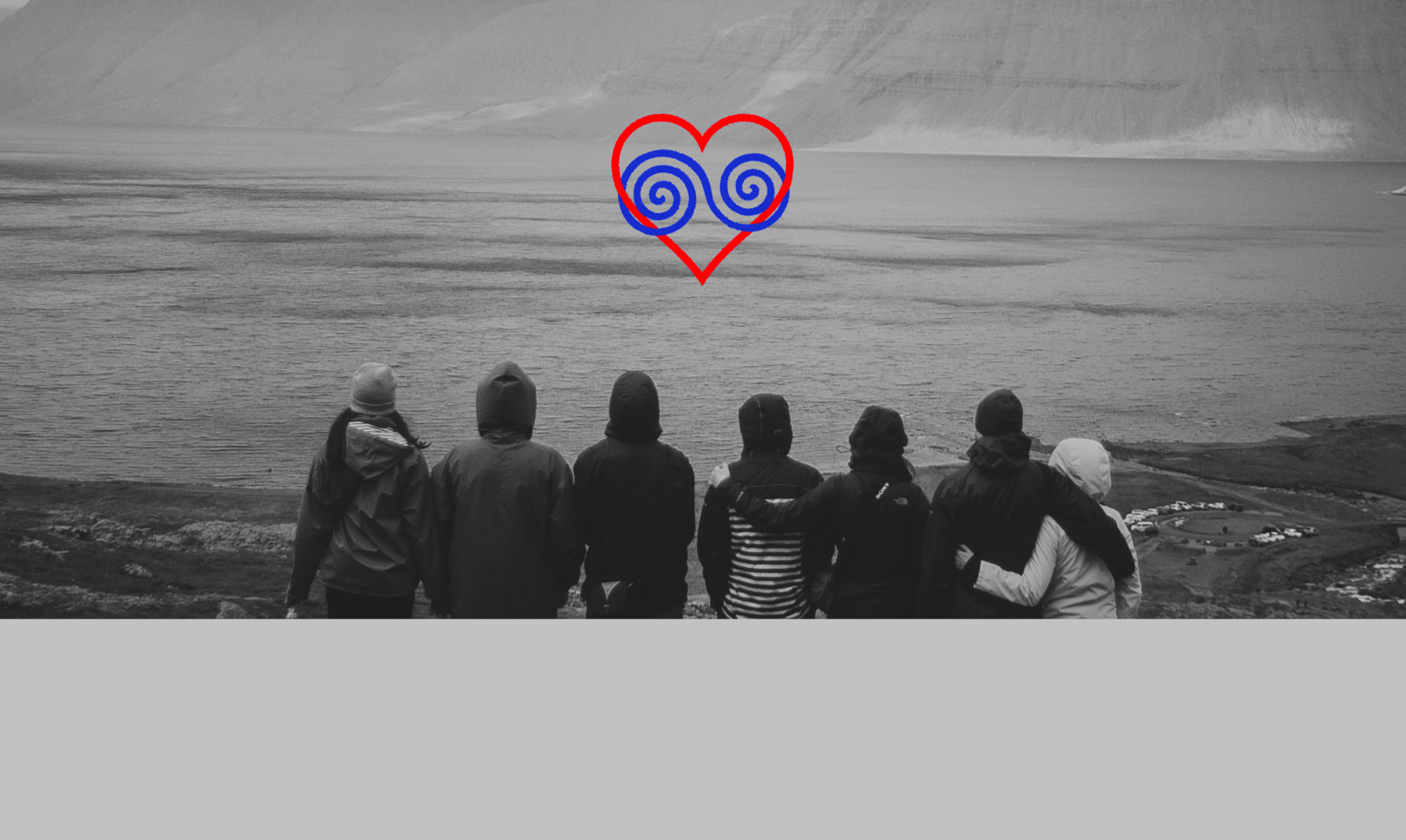Long live diversity!

In the US cult science fiction series “Star Trek: The Next Generation“, in season 6 episode 9 (“The Quality of Life“) a scientist invents a group of work robots for delicate tasks in challenging environments, which have the ability – depending on the analysed problem – to create by themselves (for the nerds among us: to replicate) the best possible tool for the respective further procedure. During the episode, however, the viewers can also experience how the robots share certain approaches for all-round optimization (which is seen as a sign of networking ability, flexibility, communication and intelligence), refuse to expose each other to unnecessary danger (which speaks for healthy self-assessment and self-preservation) – and, as it comes to the worst in an extremely risky situation, one of the little machines sacrifices itself, so to speak, for the rest of its group, which in this way survives the danger of destruction in an emergency situation.
A well-known saying, which originates, among others, from one of my favourite psychologists – Abraham Maslow, whom I often quote here on this bLog – states that “whoever owns more tools than just a hammer, would not consider everything else as a nail”.
To me, Mr. Maslow is an enormously important source of impetus regarding the universe of multiple relationships, since as a representative of the so-called “Humanistic Psychology” he made significant contributions to the exploration and awareness of human needs (first mentioning Entry 11), as well as having directly influenced, via his concept of ethical-questioning “Self-actualization“, Morning Glory Zell-Ravenheart, the woman who shaped the idea of Polyamory in print-ready format for the first time in 1990 (see especially Entry 49).
Concerning multiple relationships, Maslow’s “Hammer metaphor” contains several fundamental messages:
On the one hand – and most obvious – that a hammer, although practical, is nevertheless rather a coarse instrument, which is certainly hardly suitable for precision work. Which is at the same time a symbol for the fact that it is not always wise to approach every venture one encounters with rather blunt force, thereby attempting to level it into the ground as much as possible (which – if you apply it to interpersonal relationships – sounds somewhat alarming in itself…).
On the other hand, that the potential of having a richness of options (i.e. tools) gives us flexibility in dealing with problems – even when they come along unexpectedly.
And Maslow’s picture tells us something else: That just the mere knowledge of our (potential) flexibility changes our perspective – our basic attitude – both in terms of confidence in our ability to come up with solutions, and to the effect that we gradually no longer regard any difficulties that may come our way as so severe that we would have to meet them with a “maximum mobilization” of all our resources and forces.
In multiple relationships, which, like Oligo- or Polyamory, distinguish themselves with the characterizing addition “ethical”, especially the latter mentioned mindset and approach is of great importance.
For it contains the mandate for all of us who want to move through worlds of multiple relationships to persistently engage in the maintenance and expansion of our very own “assortment of tools.”
Which is not easy, because if we are used to think so far predominantly in monogamous ways, it is rather familiar to us to act predominantly out of the “hammer-aspect”:
Jealousy? Bang! – there simply must not be any other loved ones besides the core couple! Fear of loss? Bang! – the other one immediately has to stop his or her fear-inducing behaviour! Communication problems or friction issues due to misunderstandings? Bang! – best solution: one-way communication (also known as “clear announcement”…) bottom up or top down with a defined internal hierarchy – then such things won’t happen! By which I do not mean to say that this is a good approach in a monogamous model – but the past of our parents and grandparents has tragically proven how far people can get with just a hammer…
Abraham Maslow accordingly gave “self-realization,” which Morning Glory Zell-Ravenheart admired so much, such an essential status precisely because there we can immediately start with our “tool care and expansion” in the most basic and elementary relationship of all: the one with ourselves.
Abraham Maslow, would not have been THE Abraham Maslow of the meanwhile much-invoked “Maslow’s pyramid of needs” (which by now is scientifically no longer regarded as being quite as fixed as it was in its early days), if it had not already been clear to him from his knowledge of human psychology that our (problem-)responsiveness (i.e. the diversity of our tools) is strongly related to the knowledge concerning the composition of our need situation.
In the last five bLoge entries of this year, I have repeatedly dealt – also self-critically – with precisely this knowledge or ignorance of one’s own need situation. And the ensuing neediness… Especially because being needy means that the first thing you always reach for when you look into your toolbox is the ol’ hammer: Problem? Eliminate it – BANG!
For the mere, predominantly unconscious, knowledge that the hammer is able to eliminate problems makes it unfortunately seductive simply out of sheer habit. And this is also somewhat alarming for our interpersonal relationships…
Whereby self-realization requires just such a significant degree of becoming conscious, in accordance with the goals of humanistic psychology, as I presented them in Entry 51 – and outline them briefly here once again:
- Human beings are more than the sum of their parts. They cannot be reduced to single attributes.
- Humans exist both in unique human contexts as well as in a world-wide ecology.
- Humans are conscious beings and they are conscious of being conscious. Human consciousness always includes an awareness of oneself in the context of other human beings.
- Human beings have the ability to make decisions and therefore assume responsibility.
- Human beings are intentional, they strive for goals, they are aware that they cause future events, and they seek for meaning, a sense of value, and expression of creativity.
Psychobabble, too complicated?
The pitfalls usually become apparent when we discard awareness, consciousness and cognition (which is, after all, are essential pieces of self-acknowledgement).
Because nature has unfortunately arranged it somewhat awkwardly that we can fall in love with others faster than we are able to trust them.
In Entry 15, however, I do point to the human capacity for speedy (pre-)trust (“Swift Trust Theory”), but at the same time I explain that this will not carry through, especially in precisely those cases where our own deficient foundation of needs comes under presumed assault. And so, seemingly threatening or even fear-inducing behaviour on the outside will immediately shrink an already scarce contents of our toolbox back to hammer size – and with it, as mentioned above, the perspective of our coping strategies: “Oh no, it’s a NAIL!!!”
The Star Trek episode mentioned at the beginning uses the parable surrounding the cute work robots to confront viewers with the question regarding what life is.
Star Trek is acknowledged science fiction – and thus the little machines are already a little ahead of us. Because they show us why they are very much alive – and humanistic psychology is an important part of the answer:
- By possessing, so to speak, an “infinitely diverse inner toolbox”, they are clearly “more than the sum of their parts”. They are manifested plurality, not reducible to one characteristic – and that, applied to our present age, in which we talk about e.g. fluidity of sex, gender and types of relationships, is just as diverse as it is non-normative.
- By communicating with each other, the devices create a network of experience that constitutes a new, unique combination. At the same time, this network can only maintain exactly this quality through all contributors, which creates both an individual and an overall context. To me, this is an essential competence of committed-sustainable “multiple” relationships.
- The robots show consciousness specifically at the moment when they are supposed to work in a danger zone where they might be destroyed. In doing so, they demonstrate healthy self-care, which of course primarily benefits each individual (because it survives) – but at the same time takes into account and protects by this action the “greater whole” (the “mutual we” of Oligoamory, you might say) to which they all contribute.
- By taking decisions, the robots also prove beyond the purely practical level that they “own more than just a hammer”. Because in this way, they assume personal responsibility to solve problems individually, assume overall responsibility to protect their group – and in case of doubt, they join forces to benefit from the experience of others.
- The scene in which a robot finally sacrifices itself for the others in an initially hopeless situation touches what I call the core essence of romanticism in Entry 34: the unrequested self-sacrifice. Because quite obviously the robots have developed an acknowledgment of their own significance and their own value. which means that their intentions and goals are no longer robotic at all, because they have realized something deeply human by assuming plurality, consciousness and responsibility: Their finiteness – and thus their valuable nature. the “self-sacrifice” (even without giving up life) is for me therefore a proof of “pure love” (and only real living beings are capable of it): Our contribution, our gift to our group, our network of relationships (and it is not at all self-less in this way, if it is reciprocated to us next time…).
For me, of course, in the Star Trek series, it’s a neat premise that there are several robots right from the start. A single specimen alone, despite its advanced tool capability, would otherwise never have realized its full inherent potential (and then presumably would have developed neither consciousness nor life).
Because multiple relationships therefore probably always impact the degree of our self-realization. They “pluck”, so to speak, at our consciousness and confront us with our measure of existing inner liveliness.
Successful multiple relationships therfore require precisely the increasing ability to change perspective, which we can certainly improve in interaction with others, but for which we must seek – and uncover – the foundations within ourselves.
The same is thus true for the inalienable individual value residing in us and our lifelong search for meaning, which (hopefully) completes us more and more and brings about who we truly are as a human being. Contacts with a wide variety of people and environments will give us knowledge about the sheer amount of tools that are available for a wide variety of challenges.
However, only our practice with them in truly trustful, intimate relationships, which will constitute our predictable (social) group (precisely because there we are aware of our mutual limitations and our valuable nature!), will make us champions in gradually transforming our toolboxes into genuine treasure chests.
Thanks to Adam Sherez on Unsplash for the photo!

